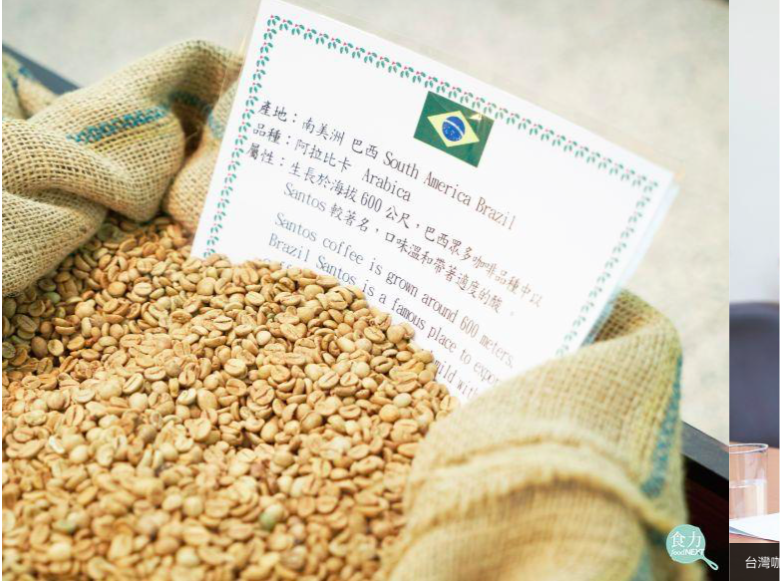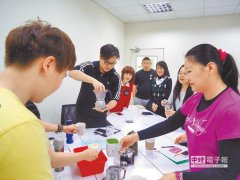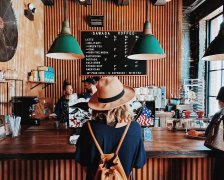Every coffee bean needs to be screened, graded and examined.

What you should know about food.
95% of Taiwan's coffee beans come from overseas. During the border inspection conducted by the customs, the Food and Drug Administration of the Ministry of Health and Fuzhou listed pesticide residues and ochratoxin as coffee bean sampling items. General coffee beans will be graded according to origin, factory height, particle size and so on after processing.
Write = Lin Zhengwen
Every cup of black and mellow coffee comes from coffee bean grinding and extraction. the quality of the coffee bean itself affects the flavor of the entrance. Ninety-five per cent of Taiwan's coffee beans come from overseas. According to the Food Border Inspection Annual report Manual of the Food and Drug Administration of the Ministry of Health and Fuzhou in 2014, Taiwan imported 32000 metric tons of coffee from abroad, more than tripling compared with 2006. However, official statistics are slow to update. Wu Yiling, director of the Taiwan Coffee Association, pointed out that the annual growth rate of coffee bean imports is almost more than 30%. According to a rough estimate, Taiwan's coffee imports have grown at least 2.7 times over the past decade.
Taiwan imports coffee from as many as 73 countries, and the top five countries applying for inspection batches are Japan, the United States, Vietnam, Indonesia and Malaysia. Due to the diversity of sources, in order to do a good job in basic food safety checks, pesticide residues and ochratoxin are sampling items for coffee beans when the FDA conducts border checks at the customs.
Ochratoxin A (Ochratoxin A) is a secondary metabolite secreted by Penicillium and Aspergillus. It has nephrotoxicity, immunosuppression, carcinogenicity and so on. Ochratoxin is ubiquitous in nature, in which soybeans, peanuts, corn, coffee beans and other agricultural products are easily contaminated by ochratoxin if they are not preserved properly in a high-temperature and humid environment. Ochratoxin accumulates in the human body, may cause kidney, liver and other diseases. Therefore, if there are people who often drink a lot of coffee, you should pay special attention to it.
However, from the coffee bean processing process, the coffee fruit after processing to the raw bean water content is only 12%, and the roasted ripe beans, the moisture content is less than 5%, stored in the dry state, not easy to mildew. However, if coffee beans are damp or improperly stored during shipping, there is still a risk of ochratoxin production. In the 1970s and 1980s, Wu Yi-ling saw a situation in which a large number of coffee beans spoiled due to dampness during the sea voyage and could still be sold through customs. However, such problems have ceased to be seen under the active guidance of coffee associations and operators.
Major coffee importers in China all have coffee storage space. Take Golden Coffee, where Wu Yiling works, as an example. The warehouse where a large number of raw beans are stored is at least three stories high in order to maintain good ventilation. In case of rainy seasons, there are special personnel responsible for maintaining storage humidity and maintaining the quality of coffee beans. In view of the increasing demand of consumers for the quality of coffee beans, Golden car Coffee is building coffee warehouses with refrigerated air-conditioning equipment to let coffee live in air-conditioned rooms to maintain the best quality and flavor.
As for the question of whether coffee beans have pesticide residues, Wu Yiling visited major coffee producing countries in the world and found that most of them are poor and backward countries, and the application of pesticides by farmers is not in line with economic benefits, and after the coffee fruit has been processed, the probability of pesticide residues is extremely low. According to the results of coffee sampling tests conducted by the Food and Drug Department over the years, the failure rate is very low.
However, some people in the coffee industry have revealed that the coffee border inspection is a "sampling", not batch-by-batch inspection, and it is still possible to drink defective beans with bad luck. Therefore, after buying raw beans, many operators will conduct manual screening before baking to ensure the quality of the beans. Some people may even think that the bulk commercial coffee beans that have not been manually screened are more likely to be mixed with defective beans and the quality is relatively poor.
Wu Yiling believes that the concept of "picking beans by hand is good coffee" does not apply to the general public. Generally speaking, coffee that needs to pick beans manually is usually tasted as fine coffee produced in small quantities, as well as coffee used for testing when participating in coffee competitions. In general, coffee beans are "graded" (grading) according to their origin, factory height, particle size and the number of imperfections in the sample (including broken beans, pebbles or branches, etc.).
And now the automatic screening of coffee beans has improved from the use of infrared identification to the color sorting machine. After the raw beans enter the guide trough, the color selection machine will blow out the defective beans that do not conform to the color setting from the bean stream, and the beans that have been selected by color will also be screened manually through the conveyor belt to pick out obvious defective beans. Therefore, when selecting beans, manufacturers only need to confirm whether the sample beans meet the classification, because the graded beans naturally have the corresponding quality, and there is no need to worry too much when baking and drinking them later.
Important Notice :
前街咖啡 FrontStreet Coffee has moved to new addredd:
FrontStreet Coffee Address: 315,Donghua East Road,GuangZhou
Tel:020 38364473
- Prev

Learn the Coffee textual Research and pull the car Company Business
Du Suqin (first from right) attends a fashion beverage training course to learn beverage preparation skills. (provided by the Ministry of Labor) du Suqin, which sold its own bicycles and spare parts in Miaoli, because the business declined after the store moved and was encouraged by cyclists, signed up for the fashion beverage training course of the industrial talent investment program of the Ministry of Labor. After 3 months of training, he sold coffee in the bicycle store and successfully combined it.
- Next

The shelf life is only 25 seconds! Italians don't take out coffee. Drink before you go.
Schematic diagram of ▲ Cafe. (photo / taken from Pixabay) I can't imagine living without coffee. The Times publishes that as the most frequent coffee drinker in the world, Italians drink at a different pace than others. Italian cafes are always open from morning till night, and there is no time to be deserted all day. People like to drink espresso in cafes, while espresso
Related
- What ratio of water temperature and ground does the smart cup method use to press coffee? The difference between brewed coffee and filtered coffee?
- What is the standard process for the purpose of coffee cup testing? What is the difference between hand-brewed coffee and cup testing?
- How to use hand-brewed coffee paragon small golden balls? How does cold coffee lock in the aroma of coffee?
- Is American coffee black? What is the difference between American coffee and drip coffee?
- Unexpected! Well-known tea beverage brand Lele Tea will withdraw from the Zhengzhou market!
- Starbucks enters the fashion and beauty industry?! Netizen: Give me an ice American eye cream
- Why can American refills for free? The difference between Americano and American drip pot coffee
- Being chased out of the rain in front of Starbucks?! Store: Sheltering from rain under umbrellas poses a safety hazard
- The white moonlight has changed?! Lucky launches "Big Winter Pear American"
- Hand-brewed coffee three-stage method, high-sweet and universal brewing method to share! What does the high sweet water level of hand-brewed coffee mean?

